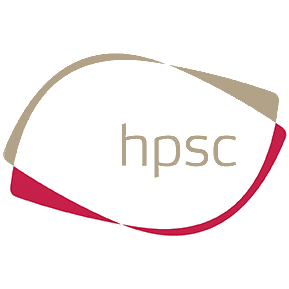Notifying Infectious Diseases
All medical practitioners, including clinical directors of diagnostic laboratories, are required to notify the Medical Officer of Health(MOH)/Director of Public Health (DPH) of certain diseases. This information is used to investigate cases thus preventing spread of infection and further cases. The information will also facilitate the early identification of outbreaks. It is also used to monitor the burden and changing levels of diseases, which can provide the evidence for public health interventions such as immunisation.
What to notify?
The up-to-date list of notifiable diseases is available on the HPSC website.
The list of diseases (and their respective causative pathogens) that are notifiable is contained in the Infectious Diseases Regulations 1981 and subsequent amendments. The most recent amendment to the Regulations is the Infectious Diseases (Amendment) Regulations 2022 (S.I. No. 252 of 2022).
Immediate preliminary notification is required for a sub-set of notifiable diseases.
When making a notification, notifiers may refer to the case definitions for notifiable diseases. These case definitions have been developed in line with standardised European case definitions. The Health Protection Surveillance Centre (HPSC) is responsible for maintaining, updating and circulating the case definitions.
Who to notify?
Notifications should be made to the MOH/DPH in the local Department of Public Health. The contact details for the MOH/DPH and the counties they cover are available on the HPSC website.
How to notify?
Notifications may be made in writing, by email or by telephone to the MOH/DPH. Notifications sent by email should be encrypted. The local Department of Public Health can advise you of their method of encryption which is usually quite simple. Laboratory notifications are made electronically through the Computerised Infectious Disease Reporting System (CIDR). Clinical notifications are entered into CIDR in the Departments of Public Health.
Notify using the standard notification form. Printed booklets of notification forms are also available from local Departments of Public Health. This form contains the basic dataset that is applicable to all notifiable diseases. A supplementary dataset for specific diseases which are under enhanced surveillance may also be required. Enhanced surveillance forms in current use are available on the HPSC website.
When to notify?
Notification should be made by a medical practitioner “as soon as he becomes aware or suspects that a person on whom he is in professional attendance is suffering from or is the carrier of an infectious disease” (Infectious Diseases Regulations 1981). Notification should be made by a clinical director of a diagnostic laboratory “as soon as an infectious disease is identified in that laboratory” (Infectious Diseases (Amendment) Regulations 2003. SI No. 707 of 2003). Timely notification is important to facilitate timely public health action.
In addition to the above, there is a requirement to give “immediate preliminary notification” to a Medical Officer of Health in the case of certain specified notifiable diseases (for example, legionellosis and meningococcal disease) or if there is a serious outbreak of infectious disease in the locality.
Outbreaks
All medical practitioners, including clinical directors of diagnostic laboratories, are required to notify the Medical Officer of Health of “any unusual clusters or changing patterns of any illness, and individual cases thereof, that may be of public health concern”. In addition, immediate preliminary notification should be made to the Medical Officer of Health of any serious outbreak of infectious disease in the locality.
How is the information used?
The information collected on notifiable diseases from doctors and laboratories is used to detect and investigate outbreaks, and prevent spread of infection, hence reducing further cases of disease. It is also used to examine disease epidemiology, and implement and monitor interventions such as immunisation to protect public health.
Confidentiality and information governance
Notification to the Medical Officer of Health is a legal obligation and is not in contravention of data protection legislation. The Medical Officer of Health is required to treat records of infectious disease notifications in a confidential manner.
The Medical Officers of Health are required to provide information on a weekly basis to HPSC on the infectious diseases notified to them. This is done via CIDR. In general, access to personal information (such as name and address) is not provided by the MOH/DPH to HPSC. However, in some circumstances where public health action is needed for international contact tracing or if HPSC doctors are leading a national or international outbreak investigation, HPSC doctors may be provided with identifying information.
CIDR is the national IT system for infectious disease notifications and is certified to ISO 27001 Information Security Management System standard.
A patient with a notifiable disease should be advised of the doctor’s statutory obligation to provide certain personal details to the MOH/DPH.
Reporting infectious diseases by Ireland to authorities abroad
Ireland is required to report information on certain infectious diseases and incidents such as outbreaks, to European health authorities, to the World Health Organization (WHO), and to relevant health authorities in individual countries as appropriate. In general, such reporting does not involve the transfer of personally identifiable information.
However, if international contact tracing is required, personally identifiable data may be transferred confidentially to the relevant public health authority in another country or to a designated international authority such as the European Centre for Disease Prevention and Control (ECDC) or WHO. In such circumstances, information is provided confidentially through secure channels by encrypted email, secure fax, telephone, or within the EU by the European Early Warning and Response System (EWRS).
Further information on international transfer of information on infectious diseases is available on the HPSC website.
Publication of data from notifications
Anonymised information obtained from notifications of infectious diseases is published by the Health Protection Surveillance Centre in the form of weekly reports and annual reports. In addition, quarterly reports are produced for some diseases.
Recent changes to the list of notifiable diseases
The list of notifiable diseases changed in May 2022 under an amendment to the Infectious Diseases Regulations (S.I. No. 252 of 2022 – Infectious Diseases (Amendment) Regulations 2020) when human monkeypox infection was made notifiable.
Last updated: 28 November 2022


